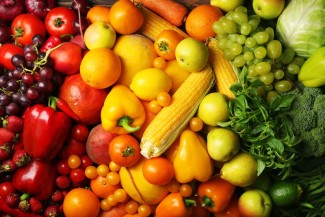
According to the Centers for Disease Control and Preventioni (CDC), the most common and costly diseases are also among the most preventable of all health problems.
These include conditions such as heart disease, cancer, stroke, obesity, diabetes, and arthritis. Alarmingly, half of all adults in the U.S. in 2012 have at least one chronic health condition, and one in four adults have at least two.
The CDC identified four behaviors that you can change to help prevent chronic disease: lack of exercise, drinking too much alcohol, smoking, and lack of good nutrition.1
The toll of unhealthy habits can be calculated by how much they are costing society – 86 percent of health related spending in 2010 was for people with at least one chronic medical condition; the cost of heart disease and stroke that year was estimated at over $315 billion, the cost of cancer care was estimated at $157 billion, and diabetes at $245 billion.
As you can see, many of society’s major health problems that are costing billions per year are also considered treatable and preventable with lifestyle management. The way that we live can have a huge impact on prevention, and one of the best places to start is by eating better, thereby reducing the risk for these diseases.
Studies show that diets centered around plants (vegetables, fruits, whole grains, beans, lentils, soy, nuts, and seeds) can significantly reduce your risk, and even reverse, chronic disease. In one 14-year study by Harvard2, researchers found that the more fruit and vegetables people consumed, the lower their chances were of getting heart disease. The participants who had eight or more servings of fruits and veggies a day were 30 percent less likely to have a heart attack or stroke than those who had less than that.
Simply make plant-based foods the center of your diet rather than animal products such as meat, pork, poultry, fish, and eggs.3 Build your meal according to the following guide::
- Make half of your plate vegetables (cooked or raw)
- Make a quarter of your plate plant-rich proteins such as beans, lentils, tofu, tempeh and other soy products
- The other quarter can be starch such as whole grains (brown rice, quinoa, oats, buckwheat, whole grain breads or pasta) and/or starchy vegetables (potatoes, peas, and winter squash).
For snacks, fruits and moderate amounts of nuts and seeds are good options. Try to eat foods that are more in their natural state and less processed. Start by having one meatless meal a day and increase your plant-based meals as you can; the more the better!
You can also visit Down to Earth’s Recipe page for meal ideas and Learn page for additional resources.
- Centers for Disease Control and Prevention, “About Chronic Diseases”, Centers for Disease Control and Prevention
- Harvard TH Chan, School of Public Health, “Vegetables and Fruits”, The Nutrition Source
- U.S. News and World Report, “12 Health Benefits of a Plant-Based Diet”, U.S. News and World Report